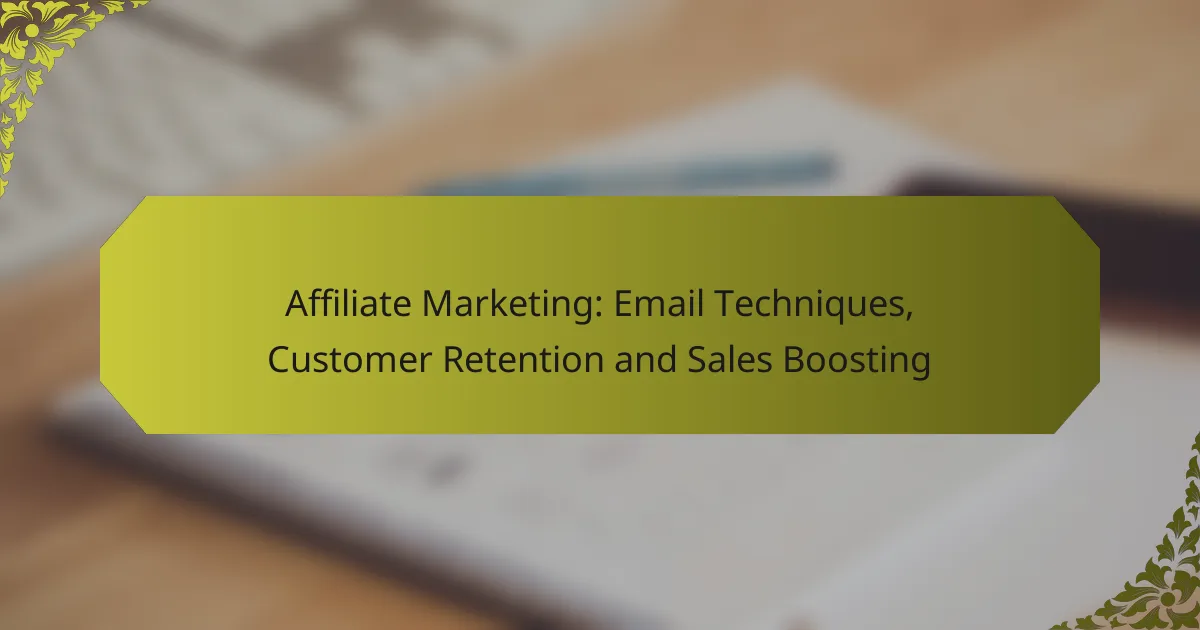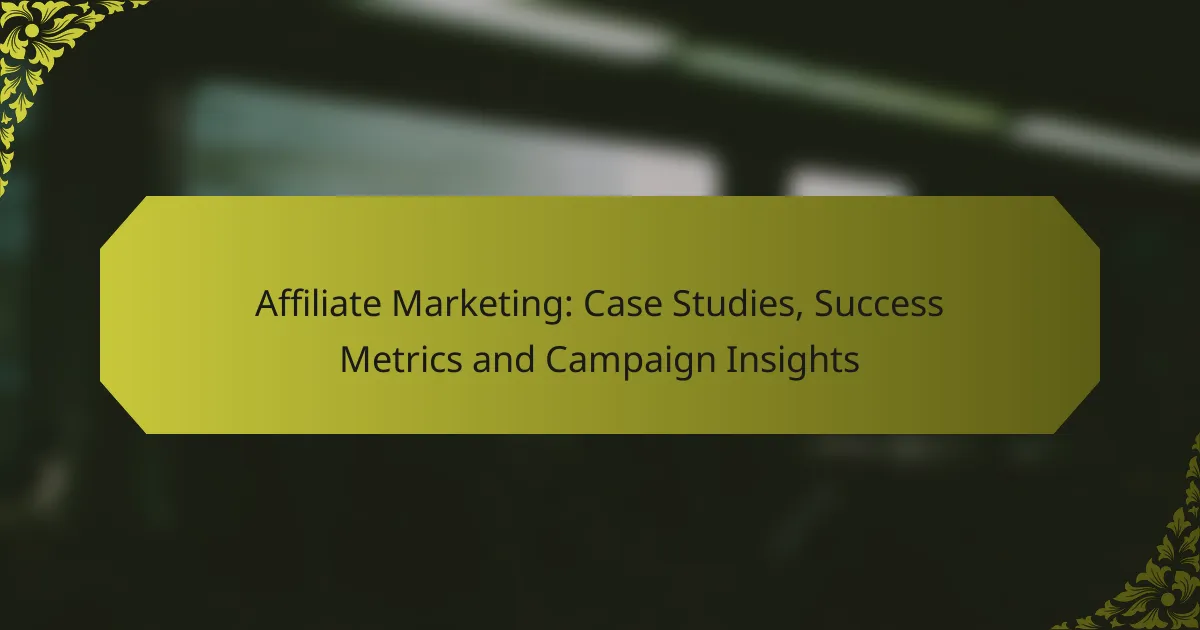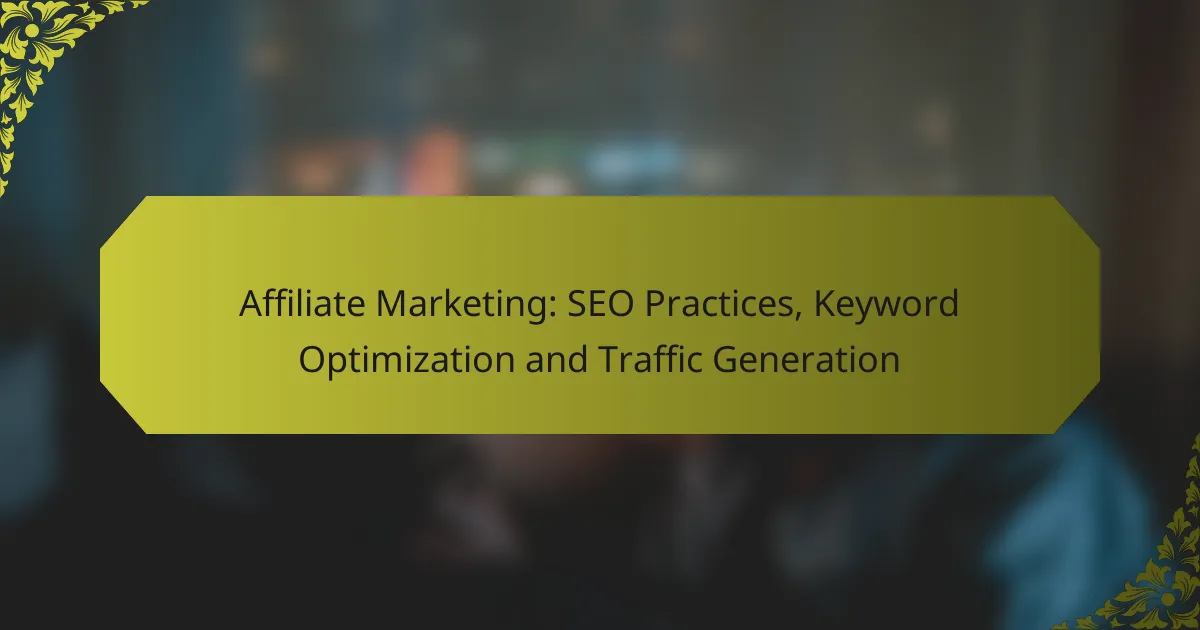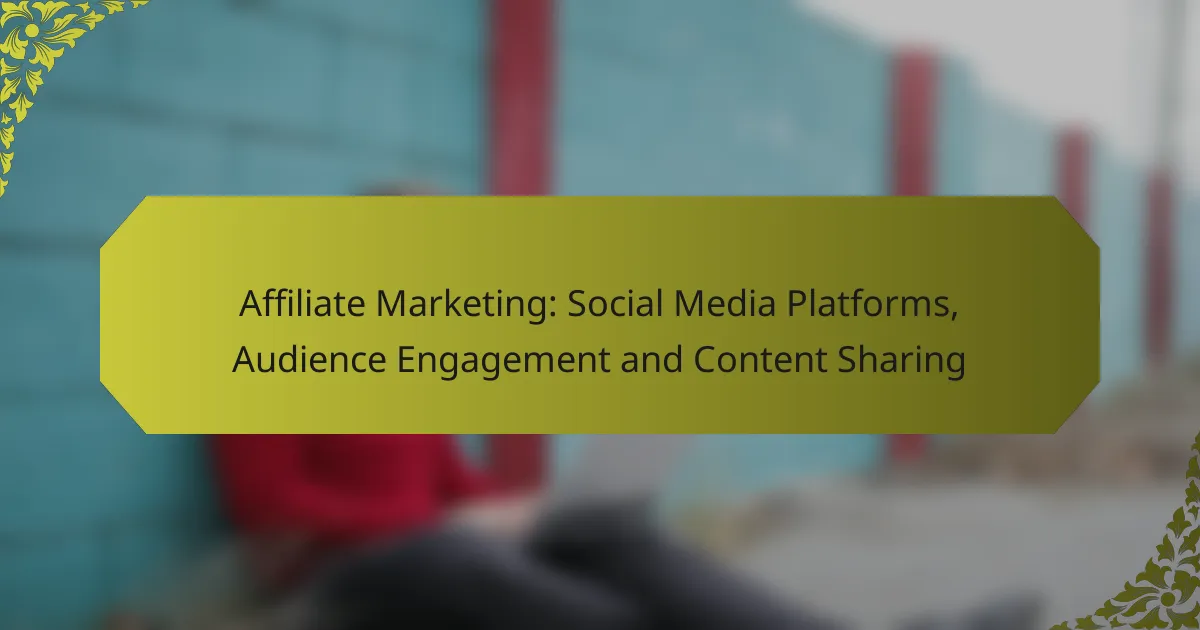Email marketing is a powerful tool for boosting affiliate sales by engaging potential customers and driving conversions through targeted campaigns. By focusing on customer retention strategies, such as personalized content and loyalty programs, businesses can foster lasting relationships and encourage repeat purchases. Monitoring key metrics like open and click-through rates is essential for optimizing email performance and maximizing sales outcomes.
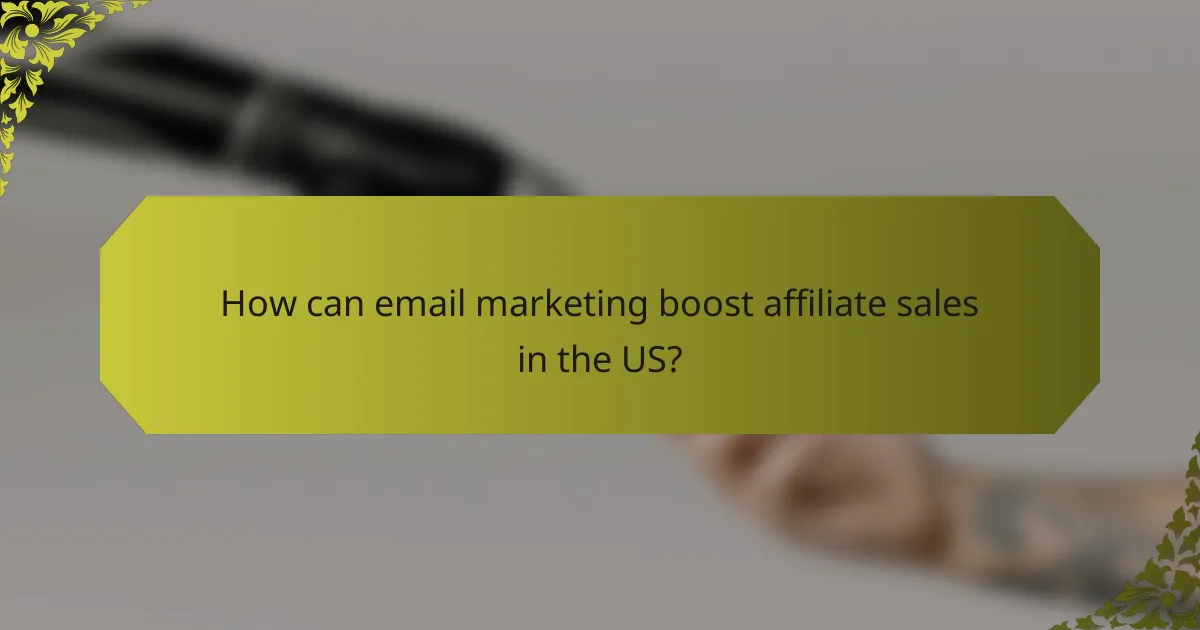
How can email marketing boost affiliate sales in the US?
Email marketing can significantly enhance affiliate sales in the US by directly engaging potential customers, nurturing leads, and driving conversions. By leveraging targeted campaigns and personalized content, marketers can effectively increase their reach and influence purchasing decisions.
Targeted email campaigns
Targeted email campaigns focus on specific segments of your audience, ensuring that the content resonates with their interests and needs. By analyzing customer data, you can create tailored messages that speak directly to different demographics or behaviors.
For example, if you promote fitness products, you might send workout tips to subscribers interested in health, while offering discounts on gear to those who have previously purchased related items. This approach can lead to higher open and conversion rates.
Personalized content strategies
Personalized content strategies involve customizing email messages based on individual subscriber preferences and behaviors. This can include using the recipient’s name, recommending products based on past purchases, or sending content relevant to their interests.
Implementing personalized strategies can increase engagement rates significantly. For instance, emails that include personalized subject lines can see open rates increase by up to 20%. Consider using dynamic content blocks to change sections of your email based on user data.
Automated follow-up sequences
Automated follow-up sequences allow you to send a series of emails triggered by specific actions, such as signing up for a newsletter or abandoning a shopping cart. This ensures timely communication and keeps your brand top-of-mind for potential buyers.
For example, if a user leaves items in their cart, an automated email can remind them of their interest, possibly including a discount code to encourage completion of the purchase. This method can lead to increased sales and improved customer retention.
Segmentation for better engagement
Segmentation involves dividing your email list into smaller groups based on shared characteristics, such as purchase history or engagement level. This allows for more relevant messaging, which can lead to better engagement and higher conversion rates.
For instance, you might segment your list into active buyers, lapsed customers, and new subscribers. Each group can receive tailored content that addresses their unique relationship with your brand, enhancing the likelihood of a positive response.
Utilizing A/B testing
A/B testing, or split testing, involves comparing two versions of an email to determine which performs better. This can include variations in subject lines, content layout, or call-to-action buttons. By analyzing the results, you can make data-driven decisions to optimize your email campaigns.
For example, you might test two different subject lines to see which one yields a higher open rate. Regularly conducting A/B tests can help refine your strategies and improve overall campaign effectiveness, leading to increased affiliate sales over time.
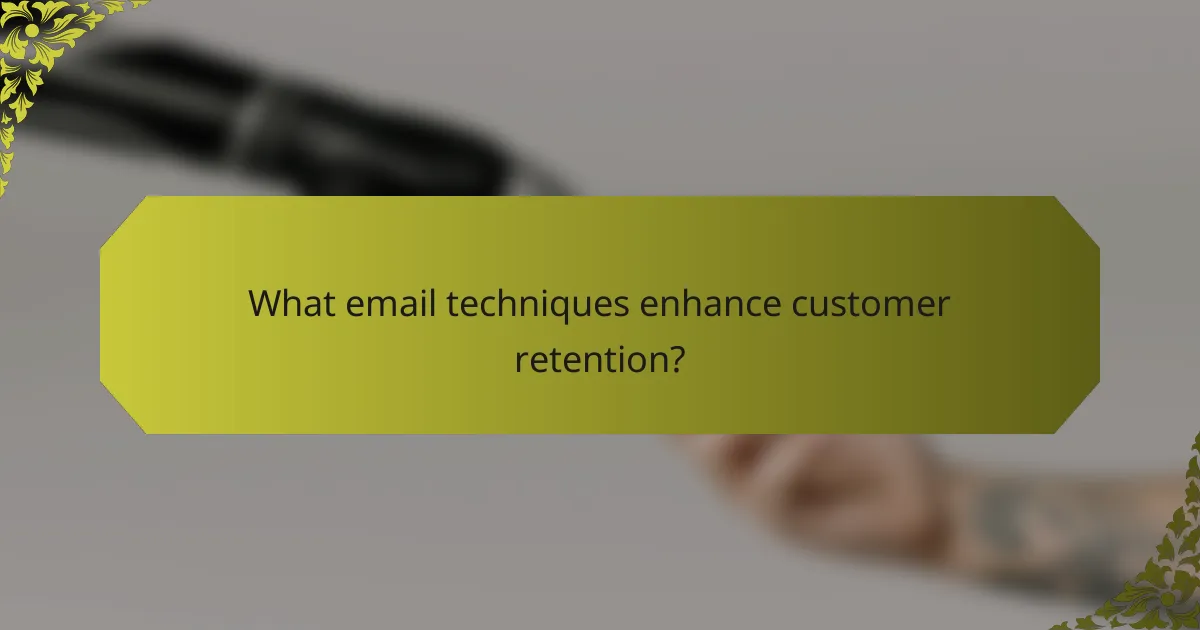
What email techniques enhance customer retention?
Email techniques that enhance customer retention focus on building relationships and providing value to subscribers. By implementing strategies such as regular newsletters, loyalty rewards programs, exclusive offers, and feedback solicitation, businesses can keep customers engaged and encourage repeat purchases.
Regular newsletters
Regular newsletters keep customers informed about new products, promotions, and company news. Sending these updates on a consistent schedule, such as weekly or monthly, helps maintain visibility and fosters a sense of community among subscribers.
To maximize effectiveness, ensure that newsletters are visually appealing and contain valuable content, such as tips or insights related to your products. Aim for a balance between promotional and informative content to keep readers engaged.
Loyalty rewards programs
Loyalty rewards programs incentivize repeat purchases by offering points, discounts, or exclusive perks to returning customers. These programs can significantly boost customer retention by making shoppers feel valued and appreciated.
Consider implementing tiered rewards systems where customers unlock greater benefits as they spend more. This approach encourages higher spending and fosters long-term loyalty. Ensure that the program is easy to understand and communicate its benefits clearly to subscribers.
Exclusive offers for subscribers
Providing exclusive offers for subscribers creates a sense of urgency and appreciation. These offers can include discounts, early access to sales, or special products available only to email recipients.
To effectively implement this strategy, clearly communicate the exclusivity of these offers in your emails. Use compelling subject lines and calls to action to encourage immediate engagement and conversions.
Feedback solicitation
Soliciting feedback from customers demonstrates that their opinions matter and helps improve your offerings. Sending surveys or request emails after purchases can provide valuable insights into customer satisfaction and areas for improvement.
Keep feedback requests concise and easy to complete, offering incentives like discounts for participation. Regularly analyze the feedback to make informed decisions that enhance customer experience and retention.
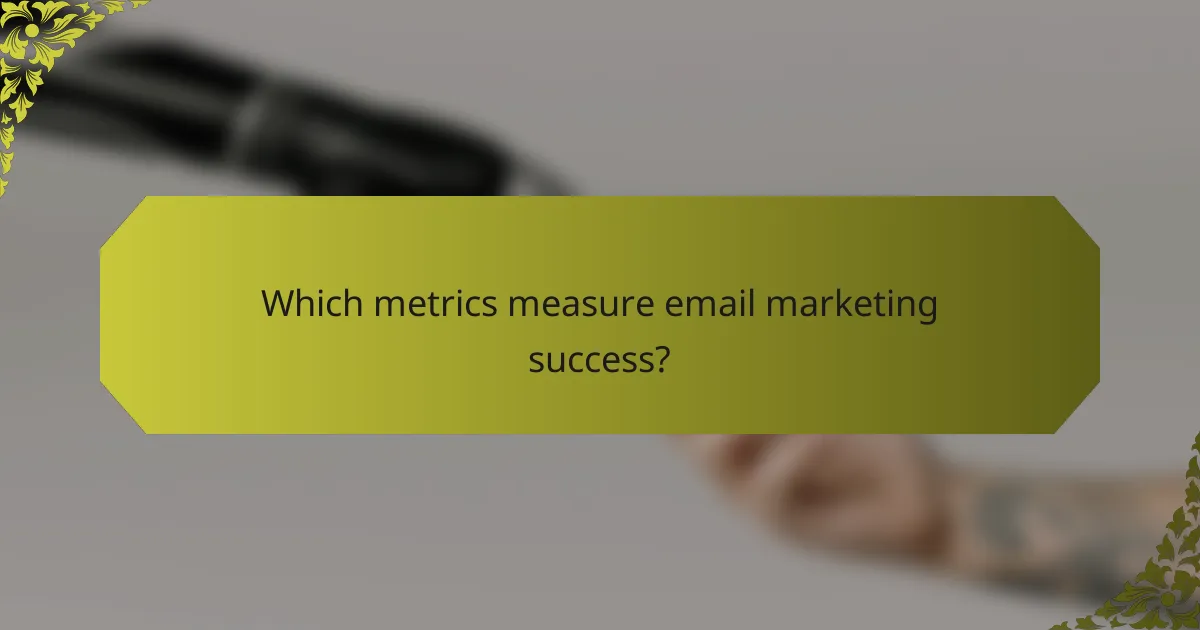
Which metrics measure email marketing success?
Key metrics for measuring email marketing success include open rates, click-through rates, conversion rates, and unsubscribe rates. These indicators help assess the effectiveness of your email campaigns and guide improvements for better customer engagement and sales outcomes.
Open rates
Open rates indicate the percentage of recipients who open your email. A higher open rate suggests that your subject lines are compelling and relevant to your audience. Typical open rates can range from 15% to 30%, depending on the industry and the quality of your email list.
To improve open rates, consider segmenting your audience and personalizing subject lines. Avoid spammy language and test different approaches to see what resonates best with your subscribers.
Click-through rates
Click-through rates (CTR) measure the percentage of recipients who click on links within your email. This metric is crucial for understanding how engaging your content is and how effectively it drives traffic to your website. Average CTRs typically fall between 2% and 5% across various sectors.
Enhancing your CTR involves using clear calls-to-action (CTAs) and ensuring your email design is visually appealing. A/B testing different CTAs can help identify which ones lead to higher engagement.
Conversion rates
Conversion rates reflect the percentage of email recipients who complete a desired action, such as making a purchase or signing up for a webinar. This metric is vital for measuring the overall success of your email campaigns in driving sales or leads. Conversion rates can vary widely, often ranging from 1% to 10% based on the offer and audience.
To boost conversion rates, ensure that your emails provide value and align with your audience’s needs. Clear, enticing offers and streamlined landing pages can significantly enhance the likelihood of conversions.
Unsubscribe rates
Unsubscribe rates indicate the percentage of recipients who opt out of your email list after receiving a campaign. A high unsubscribe rate may signal that your content is not meeting subscriber expectations or that you’re sending emails too frequently. Typical unsubscribe rates are usually around 0.2% to 0.5%.
To minimize unsubscribe rates, focus on delivering relevant content and respecting your subscribers’ preferences regarding email frequency. Providing options for subscribers to adjust their preferences rather than unsubscribing can also help retain your audience.
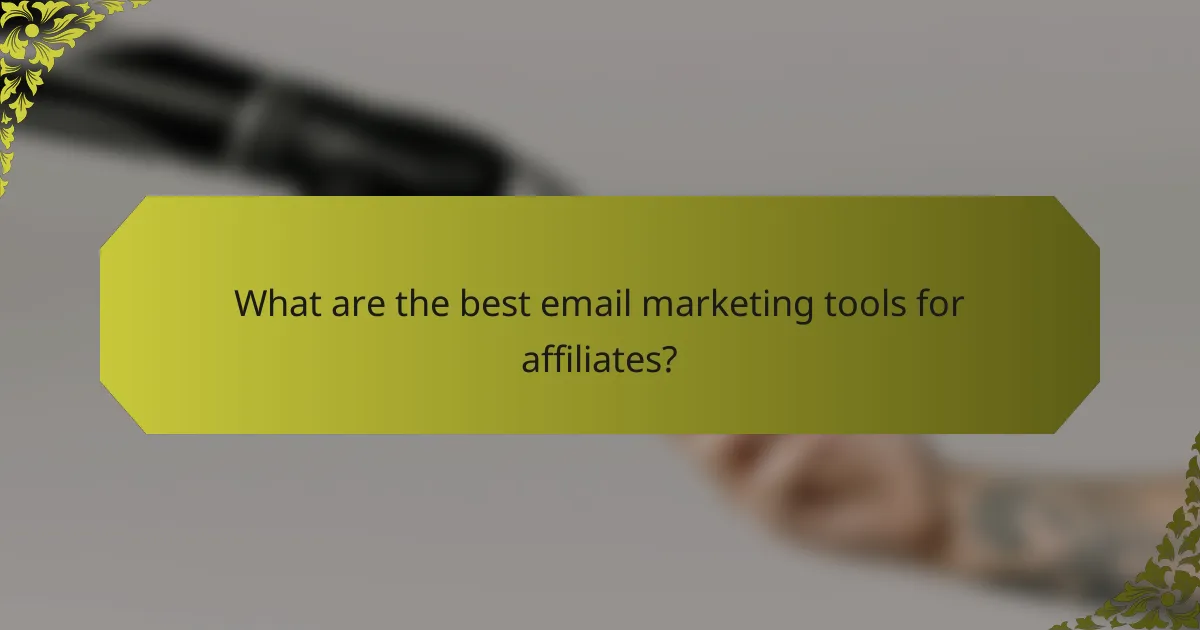
What are the best email marketing tools for affiliates?
The best email marketing tools for affiliates are those that streamline communication, enhance engagement, and drive conversions. Popular options include Mailchimp, ConvertKit, AWeber, and ActiveCampaign, each offering unique features tailored to affiliate marketers’ needs.
Mailchimp
Mailchimp is a user-friendly platform ideal for beginners in affiliate marketing. It offers a free tier with basic features, making it accessible for those just starting out. Users can create visually appealing emails using drag-and-drop templates and automate campaigns to save time.
Consider Mailchimp’s analytics tools, which provide insights into open rates and click-through rates, helping you refine your strategies. However, as your list grows, pricing can increase significantly, so plan your budget accordingly.
ConvertKit
ConvertKit is designed specifically for creators and affiliate marketers, focusing on simplicity and automation. Its tagging system allows for personalized email sequences based on subscriber behavior, which can significantly enhance engagement.
This tool offers a free trial, and its pricing is based on the number of subscribers, making it scalable for growing businesses. Keep in mind that while ConvertKit excels in automation, it may lack some advanced design features found in other platforms.
AWeber
AWeber is a long-standing email marketing tool known for its robust features and excellent customer support. It provides a variety of templates and a straightforward interface, making it easy to create professional emails.
AWeber’s automation capabilities allow you to set up follow-up sequences that can nurture leads effectively. However, its pricing structure may not be as competitive for larger lists compared to newer platforms, so evaluate your needs carefully.
ActiveCampaign
ActiveCampaign stands out for its advanced automation features and CRM integration, making it suitable for serious affiliate marketers. It offers powerful segmentation options and personalized email campaigns that can boost conversion rates.
While ActiveCampaign has a steeper learning curve, its comprehensive analytics and reporting tools provide valuable insights into campaign performance. Be prepared for a higher price point, but the return on investment can be significant for those who leverage its full capabilities.
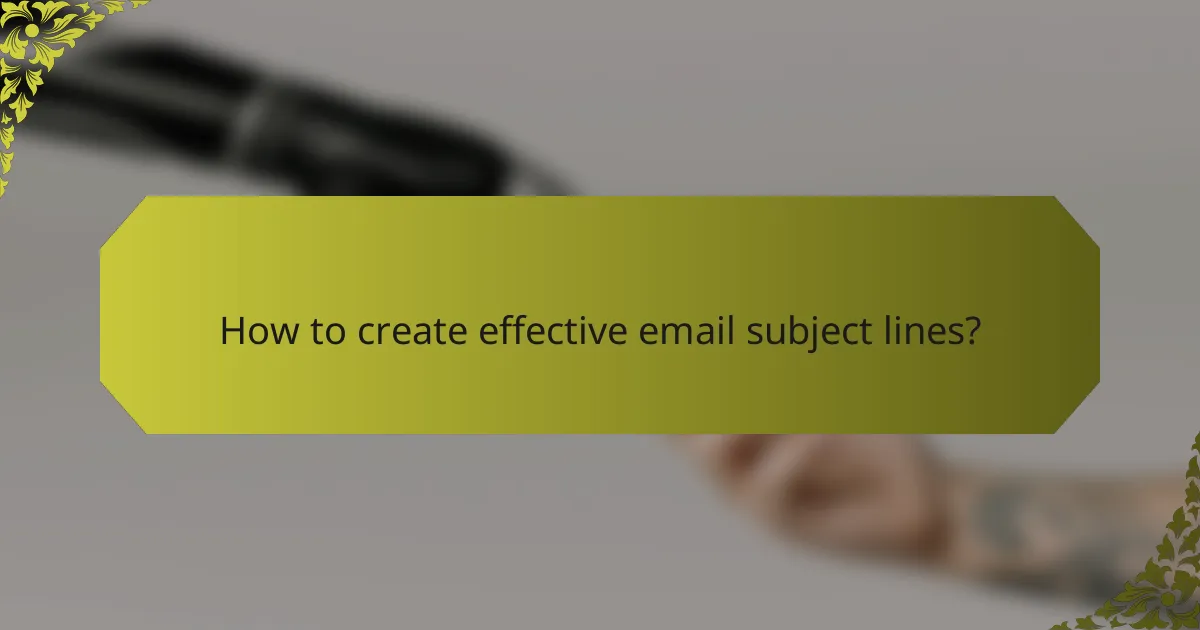
How to create effective email subject lines?
Effective email subject lines are crucial for capturing attention and increasing open rates. They should be engaging, informative, and tailored to the audience to encourage recipients to click through.
Use action-oriented language
Action-oriented language prompts readers to take immediate action. Phrases like “Get your discount now” or “Join our exclusive webinar” create a sense of urgency and excitement. This approach can significantly enhance engagement by making the recipient feel they are missing out if they don’t act quickly.
Consider using strong verbs and direct calls to action. For instance, “Discover” or “Unlock” can be more compelling than passive phrases. Testing different action-oriented phrases can help identify what resonates best with your audience.
Keep it short and sweet
Short and concise subject lines are more likely to be read and understood quickly. Aim for around 6-10 words to ensure clarity and impact. This length is optimal for visibility, especially on mobile devices where space is limited.
Avoid unnecessary words and jargon that may confuse the reader. Instead, focus on the core message you want to convey. For example, instead of “Don’t miss out on our special offer,” simply state “Exclusive Offer: 20% Off Today!” This approach is direct and effective in communicating value.
